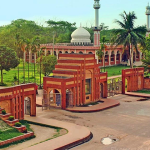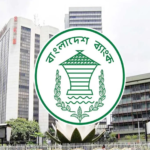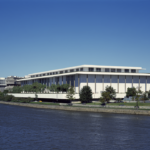Chattogram is the Gem of Bangladesh’s Southeast
Nestled on the southeastern coast of Bangladesh, Chattogram, formerly known as Chittagong, stands as a vibrant testament to the rich history, cultural diversity, and economic significance of the region. This bustling port city, with its captivating landscapes, bustling trade, and historic charm, has long been regarded as a key player in the nation’s development and global interactions.
Historical Tapestry:
Chattogram’s history stretches back millennia, with archaeological findings suggesting human habitation dating as far back as the 9th century BCE. Throughout its history, the region has been shaped by various civilizations, including the Mauryan, Gupta, Mughal, and British empires. This rich past is evidenced by the city’s architectural remnants, which range from ancient temples to colonial-era buildings.
One of the most iconic historical sites in Chattogram is the Shipakala Buddhist Vihara, a 1,200-year-old monastery that stands as a testament to the city’s connection with Buddhism. Additionally, the 17th-century Anderkilla Shahi Jame Masjid, a fine example of Mughal architecture, reflects the city’s historical significance in fostering religious and cultural diversity.
Economic Powerhouse:
Chattogram is a powerhouse of economic activity in Bangladesh, primarily due to its status as the country’s main seaport. The Port of Chattogram, the largest and busiest port in Bangladesh, handles a significant portion of the nation’s import and export trade. It serves as a vital link in global supply chains and plays a pivotal role in driving economic growth.
Beyond its maritime prominence, the city’s industry is diverse, encompassing sectors such as textiles, manufacturing, and pharmaceuticals. The Chattogram Export Processing Zone (CEPZ) has attracted numerous multinational companies, contributing to the city’s economic prosperity and providing employment opportunities to thousands.
Cultural Kaleidoscope:
Chattogram’s cultural mosaic is a fusion of various ethnicities, languages, and traditions. The city is home to a wide range of communities, including Bengalis, Chakmas, Marma, and Rohingyas, among others. This diverse composition has led to a vibrant cultural scene, where festivals, food, music, and art from different backgrounds coexist harmoniously.
The Chattogram Hill Tracts, a picturesque region near the city, is home to indigenous communities with unique cultures and traditions. The serene landscapes of lush hills, rivers, and waterfalls provide a stark contrast to the city’s bustling urban environment.
Chattogram offers a plethora of attractions for tourists seeking a blend of history, culture, and natural beauty. In addition to the aforementioned historical sites, the city is home to the Foy’s Lake, a picturesque lake surrounded by lush greenery and amusement parks, providing a popular recreational spot for locals and visitors alike.
Nature enthusiasts can explore the Patenga Beach, known for its stunning sunset views and vibrant local seafood markets. The Kaptai Lake, nestled amidst the hills, offers boat rides and glimpses into the life of the indigenous communities living in the area.
Challenges and Future Prospects:
Despite its many virtues, Chattogram faces its share of challenges. Rapid urbanization has strained the city’s infrastructure and led to issues such as traffic congestion and waste management. Moreover, the city’s proximity to the Bay of Bengal makes it vulnerable to the impacts of climate change, including rising sea levels and extreme weather events.
However, the city’s strategic location and economic importance have spurred efforts to address these challenges. Infrastructure projects, such as the expansion of the port and the construction of new roads and bridges, aim to improve connectivity and alleviate congestion. Additionally, initiatives to enhance waste management practices and promote sustainable development are gaining traction.
In conclusion, Chattogram is a city of historical significance, economic prowess, and cultural diversity that reflects the essence of Bangladesh’s Southeast. Its journey through time, from ancient civilizations to modern economic prominence, tells a tale of resilience, adaptability, and growth. As the city continues to evolve, preserving its heritage while embracing progress remains paramount, ensuring that Chattogram remains a jewel in the crown of Bangladesh’s urban landscape.








